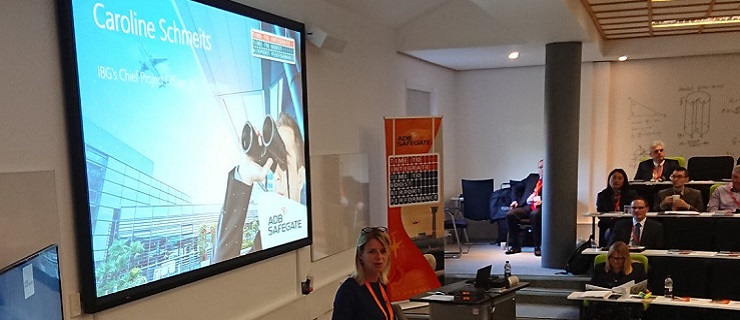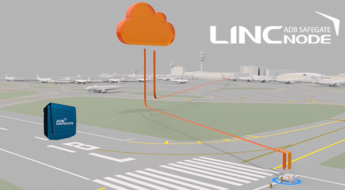
A-CDM – it’s one of many abbreviations peppering the aviation world. Yet, it’s far more than just another acronym, it’s one of the most important developments today affecting airports, promising safer, more efficient and more profitable operations. Caroline Schmeits, Chief Project Officer, Independent Business Group IBG, describes why A-CDM has the power to transform airport operational efficiency and how to deploy it successfully.
Demand outpaces new infrastructure deployment
Most know what A-CDM stands for, Airport Collaborative Decision Making, but many people don’t fully understand what it is. Is it a process? Or project? A solution? Or something else? In her presentation at the ADB SAFEGATE Aviation Summit 2018 in the UK, Caroline Schmeits, Chief Project Officer, Independent Business Group IBG, described why A-CDM has the power to transform airport operational efficiency and how to deploy it successfully.
As airports strive to cope with ever-growing numbers of passengers and rising traffic demand from airlines, it’s vital they increase their capacity. As Schmeits says: “Nearly all airports are struggling because demand is growing faster than they can build terminals and runways. Airlines are putting more pressure on airports to deliver the best services and maintain the highest punctuality. Many airports are not using their infrastructure in the most efficient way.”
A major cause of sub-optimal efficiency is missing information for the different players running airport operations. The symptoms of inefficiency can include ground handlers not being aware of the best estimated aircraft arrival time; aircraft landing and being forced to wait for a free stand; Air Traffic Control (ATC) not knowing when an aircraft will be ready for departure; and airlines unaware of when their aircraft can start engines and push back until they get ATC clearance.
A-CDM can provide a cure by bringing airport partners together and sharing agreed operational data. The aim is to enable earlier decision making by improving transparency and creating a no-blame culture.
Agreeing the right data to use
So, how does A-CDM achieve all that? “The key is information sharing. The partners agree what data is shared and how. Formal meetings are needed to assess what systems are being used, what data they process, what is duplicated, and which systems will provide the most useful data. For example, if aircraft arrival times are being predicted more accurately by ATC than the airlines, then that data should be used. However, airlines may know aircraft departure times more precisely than ATC, so the airline data is used. Formal agreements need to be set up to govern which data to use and to ensure it is available automatically without the need for manual entry,” explains Schmeits.
The next step is for all concerned to review procedures and agree the partners’ responsibilities – who solves data issues for the various milestones such as take-off, boarding, off block targets and more.
There are other critical elements that need to be agreed under A-CDM. Pre-departure sequencing from the gate with accurate Target Off Block Time (TOBT) and Target Start-up Approval Time (TSAT) avoids a first come, first served sequencing at the runway holding point which often causes aircraft queuing and delays.
The agreed procedures of A-CDM also help to improve the management of disruptions through better situational awareness and maximum use of available capacity. Crisis management tools and procedures based on the sharing of data helps the airport cope in adverse conditions such as fog or in an emergency.
On a wider scale, A-CDM can help overcome the issue of inaccurate default taxi times. It’s essential to get precise taxi times into the system to enable exact In Block prediction to start the aircraft turnaround process. This will also provide accurate take-off prediction to be fed into the Air Traffic Flow Management (ATFM) network for better airspace demand balancing across a region.
Time saved, costs cut
Clearly, there are many ways in which A-CDM can address airport operational inefficiency, but do the results justify the investments? “Yes,” says Schmeits. “Our studies show that typically an airport implementing A-CDM can expect a nine-to-one return on their investment over a period of ten years. Payback is usually achieved within two years.”
Nor are these benefits theoretical. Time and again studies have shown where gains are being made. Munich airport, for example, has seen a 20% reduction in taxi times for departures, equating to 2.75 million euros saved in fuel costs. At Paris CDG, taxi times for departures have been cut by two minutes per flight on average, with a 40% drop in aircraft waiting time at the runway.
The list goes on – Madrid is saving 2 minutes taxi time per flight; Brussels is saving 3 minutes taxi time per departing flight; Helsinki is saving 650,000 euros in fuel and 3.5 million euros through shorter delays; and Singapore Changi airport has reduced taxi-out time by 90 seconds per flight in peak periods, helping it to reduce daily carbon emissions by 15 tonnes.
Increased ATFM slot adherence despite increased traffic demand and growing ATFM regulations is another benefit. With A-CDM, Munich airport is achieving 93% ATFM slot adherence and Paris CDG is hitting 90% adherence.
Looking ahead: A-CDM is just the start
Many airports have already deployed A-CDM and see it as a stepping stone to an even more efficient future based on Total Airport Management (TAM). While A-CDM involves all airport partners in the tactical phase, TAM enables all partners to sit together in Airport Operations Centres (APOCs), working to a more pro-active and strategic Airport Operations Plan (AOP) plan. The scope of TAM is the entire airport, monitoring and guiding airside and landside operations while considering additional information from SWIM (System Wide Information Management), for example from departure airports.
Supporting A-CDM and TAM with Airport Performance
The approach and benefits being delivered by A-CDM chime perfectly with ADB SAFEGATE’s Airport Performance philosophy.
ADB SAFEGATE combines deep operational know-how with one of the industry’s most extensive integrated product and services portfolios, with solutions for gate, airfield, tower and service. This enables all parts of an airport to work together as one to increase airport operational efficiency from approach to departure.
By integrating their functional and isolated systems, ADB SAFEGATE helps airports to unlock hidden potential to handle more airport traffic by increasing operational efficiency, which means they can delay spending on infrastructure, or even avoid it completely.
ADB SAFEGATE is a leading provider of intelligent solutions that deliver superior airport performance and operations, and jointly identify and solve bottlenecks. Our consultative approach enables airports to improve efficiency, enhance safety and environmental sustainability, as well as reduce operational costs. Our portfolio includes solutions and services that harmonize airport performance, tackling every aspect of traffic handling and guidance, from approach, runway and taxiway lighting, to tower-based traffic control systems and intelligent gate and docking automation. ADB SAFEGATE has 1,000+ employees in more than 20 countries and serves some 2,500+ airports.
- A-CDMAirport Collaborative Decision MakingCaroline SchmeitsIndependent Business Group IBGTAMTotal Airport ManagementTSAT















Leave a Comment